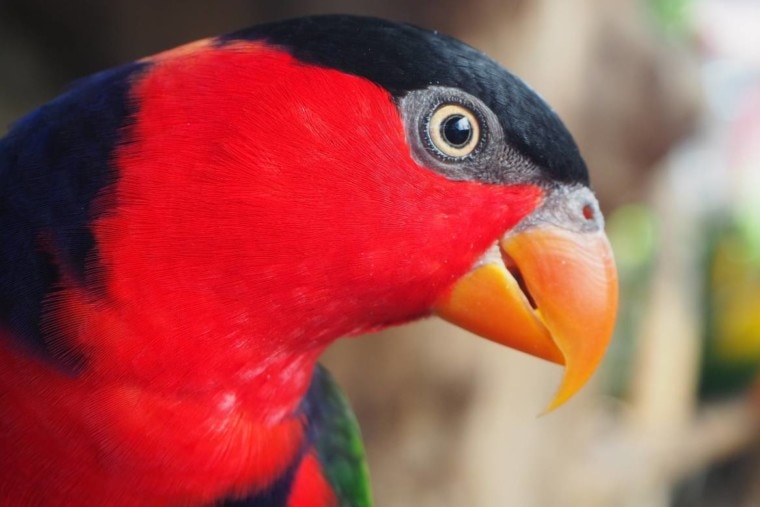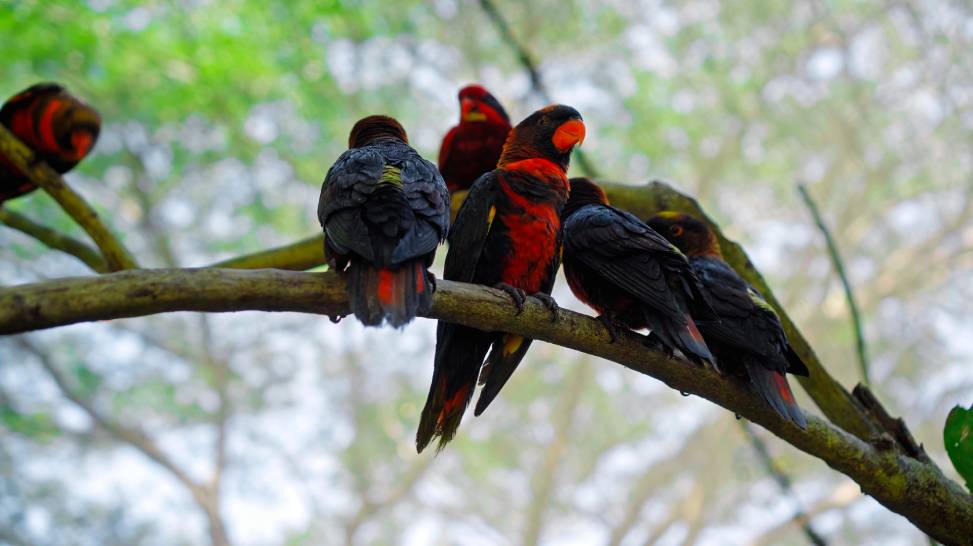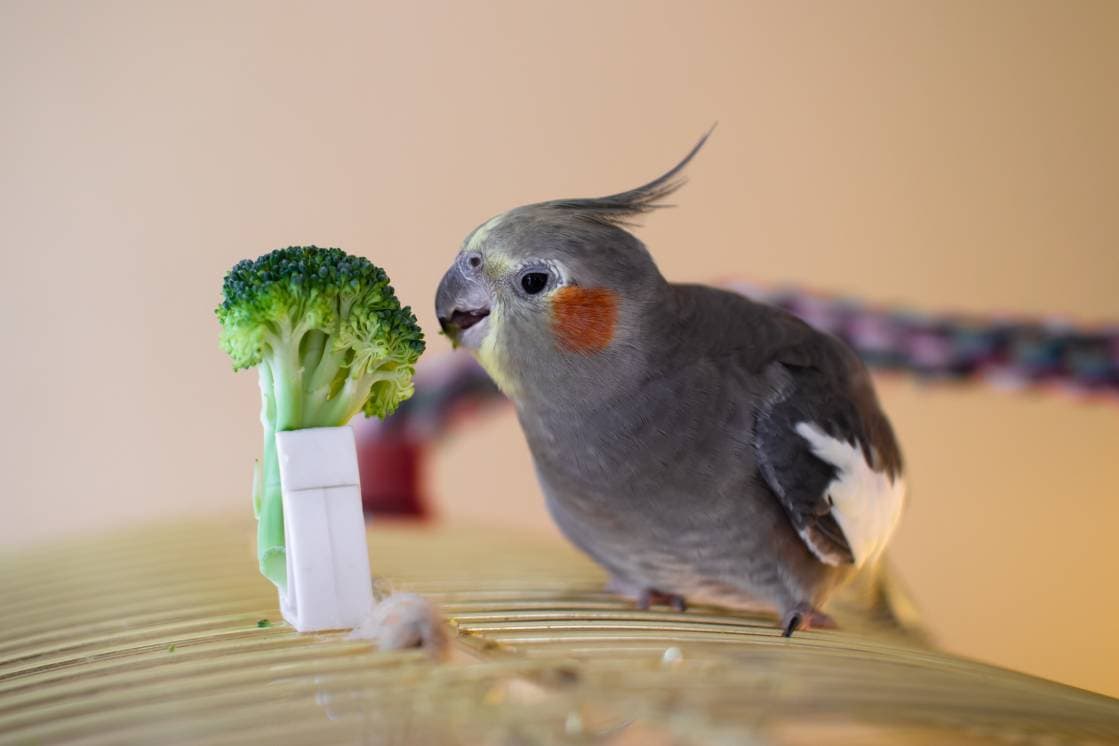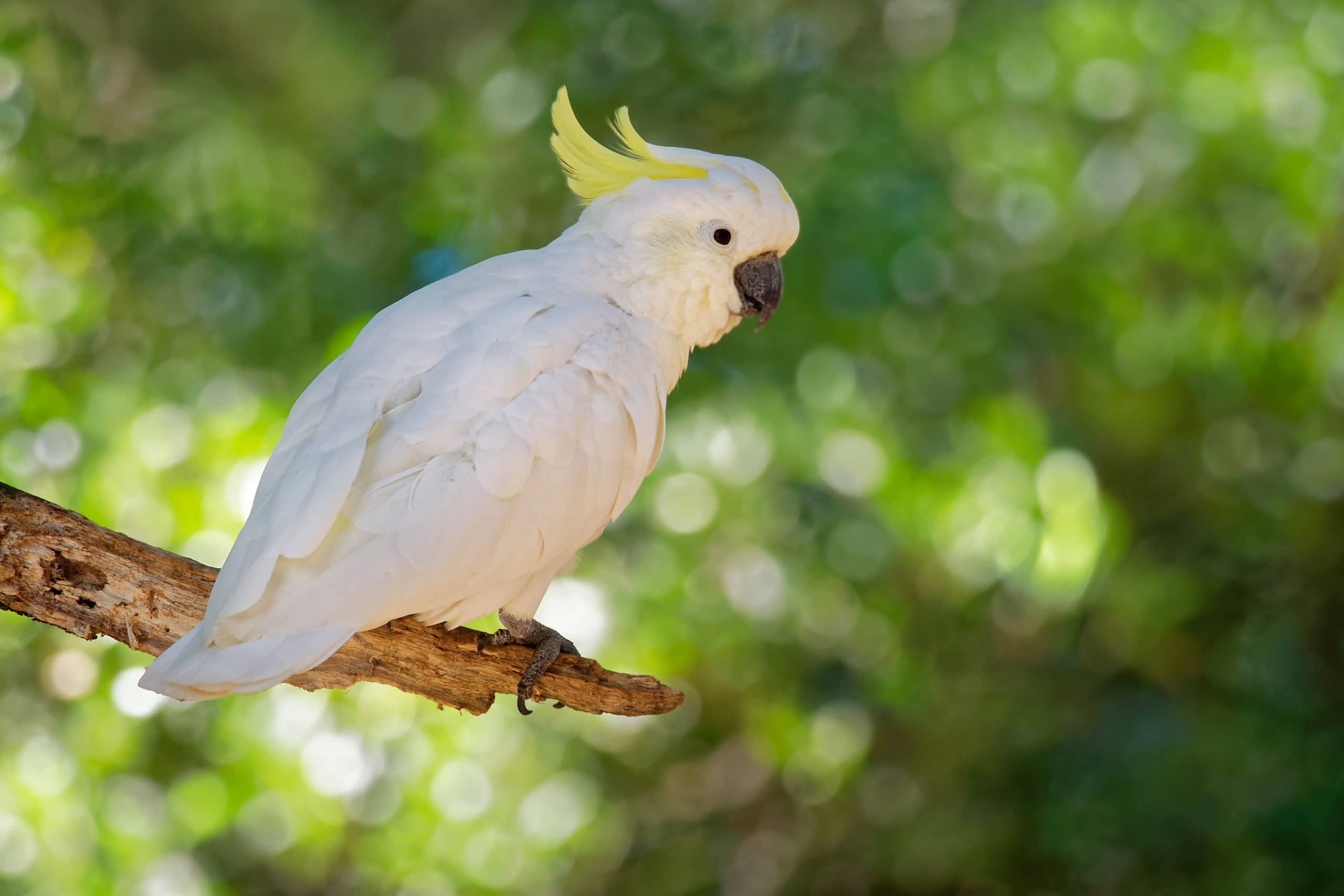
While the black lory might not be the most colorful parrot on the market, they remain an extremely popular option for bird keepers due to their charming and playful personalities.
But why else are these birds so popular, and what goes into caring for them? While it can be tempting to add one of these adorable birds to your home, you need to be able to meet all their needs to keep them happy and healthy.
 Species Overview
Species Overview
| Common Names: | Black lory, black-capped lory |
| Scientific Name: | Chalcopsitta atra |
| Adult Size: | 13 inches |
| Life Expectancy: | 20 to 30 years |
Origin and History
If you’re looking to track down a black lory in the wild, you’ll have to head to the Indonesian part of New Guinea. They live in coastal plantations, grassy savannas, mangroves, and the edge of forests.
They need open spaces to thrive. For the most part, black lories are doing well in the wild. The IUCN has listed them in the category of “Least Concern,” which means that they are declining in numbers but not at an alarming rate.
Due to their mostly docile nature, the black lory has been an extremely popular parrot for collectors. However, they don’t do well when wild-caught, so it’s always best to get a hand-fed captive black lory.

Temperament
There are few parrots in the world as playful as the black lory. They love and crave attention and will do whatever it takes to stay the center of attention.
They are extremely friendly and creative, but they can settle down after they have enough attention. It’s not uncommon for a black lory to try cuddling in your lap to take a nap after playing.
If you’re thinking of owning a black lory, give them as much attention as possible. Not only will they enjoy it, but they need it to stay happy. While black lories are extremely playful and friendly, they can turn sour if they feel neglected because you’re not spending enough time with them.
The black lory is an excellent companion bird — as long as they’re captive-bred. Wild-caught black lories don’t tolerate handling well and struggle to adapt to life in captivity. Also, it’s currently illegal to import a black lory into the United States.
Speech & Vocalizations
If there’s one complaint from black lory owners, it’s about how loud these birds can be. They make loud and shrill calls, especially when they’re excited. This is particularly common during feeding times, but it can happen anytime that they see you.
The tradeoff to noisy birds is that they’re extremely good talkers. They love to mimic, and it’s only a matter of time until your black lory repeats words back to you. Just keep in mind that their noisy nature makes them a poor choice for apartment living.
Black Lory Colors and Markings
While parrots are known to have colorful markings, the black lory is an exception. They have an almost entirely black appearance, from their beak to their tail feathers.
You might notice a slight reddish tint in their feathers, but it’s not colorful. They also can have a yellow appearance on the underside of their tail feathers, and this is typically the brightest part of their bodies.
They have black beaks, black feet, and red/black eyes. But don’t let their dark appearance fool you, these are extremely elegant and majestic looking birds, even without all the colors that you can find on other parrots.
 Caring for the Black Lory
Caring for the Black Lory
Before purchasing a black lory, you need to keep in mind that birds, the black lory included, have unique care requirements. For starters, they require plenty of attention. You should strive to spend at least 4–6 hours with your bird outside of their cage every day.
You also need a cage that’s at least 3 feet tall, 4 feet long, and 2 feet wide to give them plenty of space to roam. More space is always better, but it still won’t substitute spending time with you outside of their enclosure.
Keep bar spacing between 5/8″ and ¾”, as this eliminates the risk of them getting their head or neck stuck. Inside their enclosure should be plenty of toys and places to perch and climb. Aim to cycle toys every few days so your bird doesn’t master them.
You need to feed your black lory a diet that consists of high-quality commercial nectar. You can supplement with fresh fruits and seeds, but nectar needs to make up the majority of their diet.
Expect to clean their enclosure every day, as they’re messy eaters, and fallen food can quickly lead to health concerns.
You also should consider clipping their wings to keep them from escaping, as the outside world can be deadly for your bird.
Finally, your back lory needs to take frequent baths. They love spending time in the water, but you might need to coax them in the first few times.

Common Health Problems
Like most birds, the black lory is a hardy bird if you keep the conditions right.
But keep in mind that birds naturally hide their ailments, so once you start noticing symptoms, the sickness has already progressed, and you need to take them to a vet as soon as possible.
Still, there are potential health concerns that you need to keep an eye out for.
The best thing that you can do to keep your black lory healthy is to keep up with cage cleanings, get them enough exercise, and give them a high-quality and nutritious diet. If you do these things, the chances of dealing with health problems with your lory are slim.
Diet and Nutrition
One of the more complicated facets of caring for a black lory is their diet. Unlike many parrot species that have a mostly solid diet of fruits and vegetables, the black lory needs a diet that consists primarily of nectar.
This needs to be high-quality nectar that has all the nutrients that they need, and this is why we recommend using a commercial nectar.
You need to prepare the mixture fresh and offer it to them at least twice a day. While this is more complicated than with some other birds, if you don’t give them the correct diet, they can develop gastrointestinal tract infections.
You can supplement their diet with fruits and seeds, but you should only use these as treats. Ensure that you’re not giving them any coarse foods, as this can damage their sensitive tongues and lead to eating problems.

Exercise
Like all birds, the black lory needs tons of exercise and activity to stay happy and healthy. You need to have plenty of space for them to walk around, climb, and perch inside their enclosure.
From there, you need to give them at least 4 hours a day outside of their enclosure to fly around and exercise. You can also bond with them during this time; just make sure they can still stretch their wings and exercise as needed.
Where to Adopt or Buy a Black Lory
Since the black lory is a more expensive bird option, most pet stores won’t carry them. Instead, you’ll need to track down a reputable breeder to purchase one of these birds.
Expect to spend anywhere from $500 to $600. Also, it’s always best to visit the breeder in person and view the black lory before spending any money. There are tons of scams out there that make use of the fact that these birds can be challenging to track down.
We also recommend asking for references and getting a health check on the bird before completing the purchase process. Many health conditions are genetic, and the last thing that you want is a sick bird even when you don’t do anything wrong!

 Conclusion
Conclusion
While the black lory might be an extremely adorable companion, ensure that you have both the time and patience to care for them before purchasing one. While they make a great addition to your home, they also require a ton of care.
While these birds are playful and friendly when well taken care of, they can quickly turn nippy and mean if you neglect them. But if you have the time and energy, they make a great addition to any home!
See also:
Featured Image Credit: Rupratheep nilpechr, Shutterstock
 Species Overview
Species Overview Caring for the Black Lory
Caring for the Black Lory





